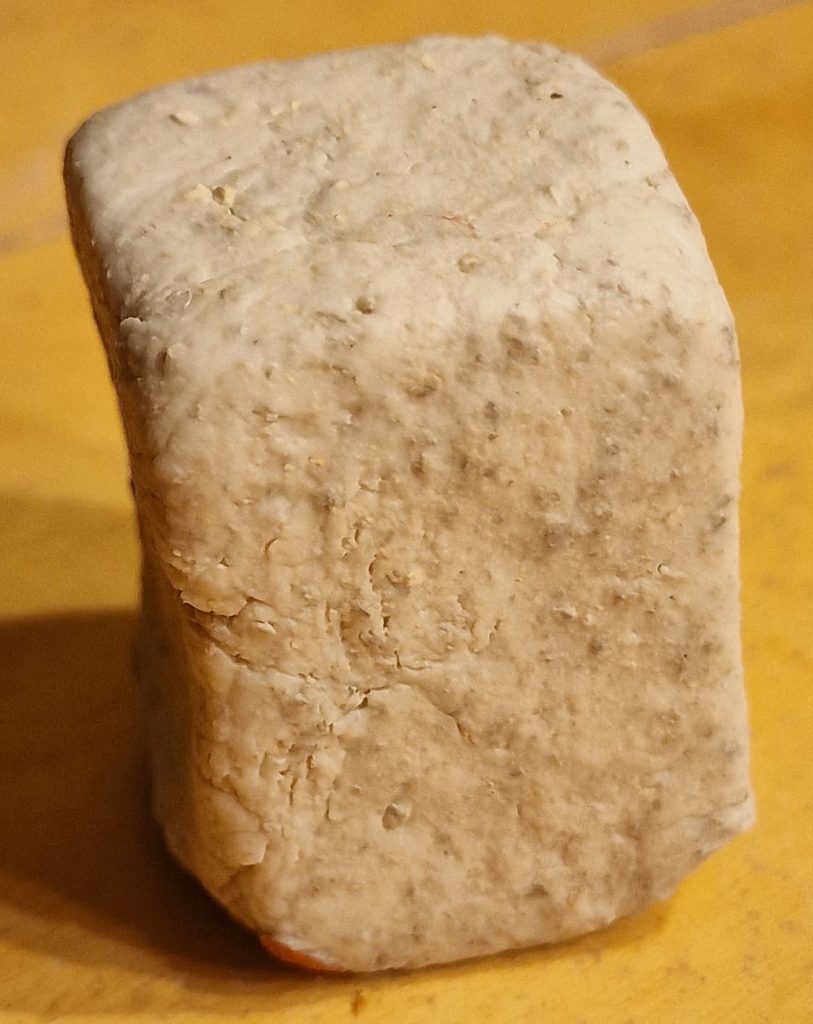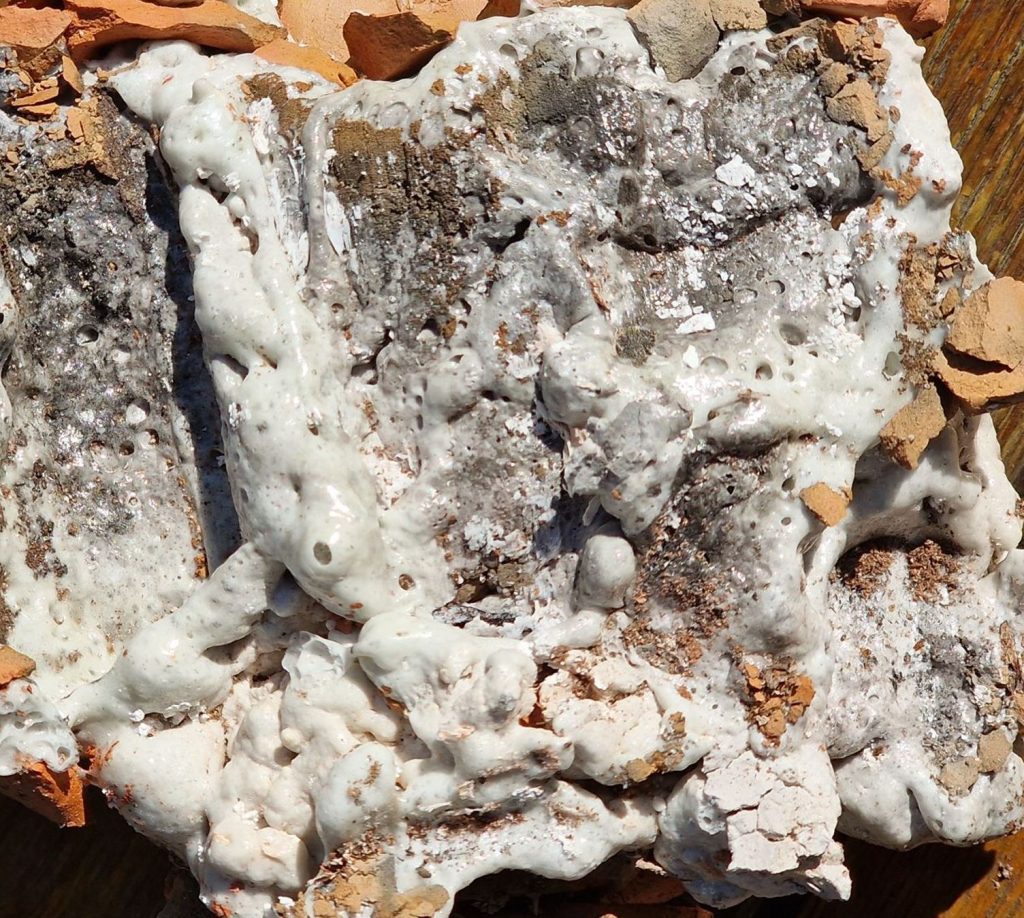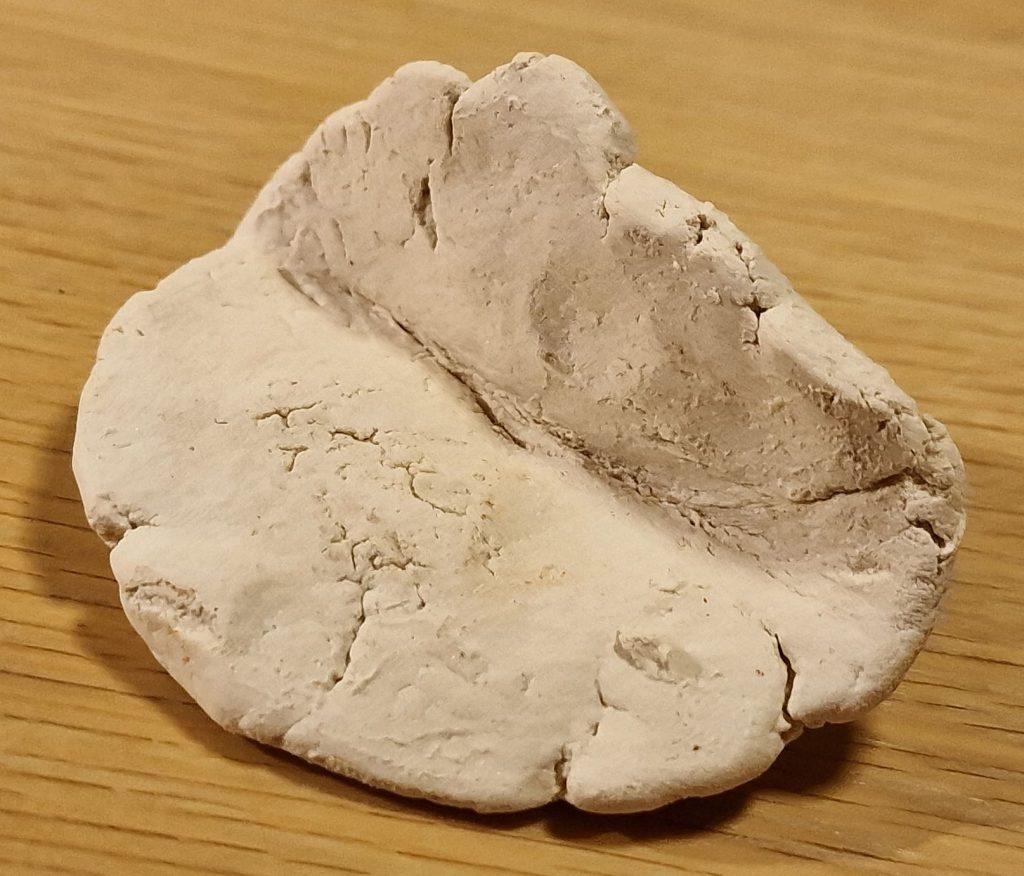
Strong low fire white clay recipes:
What is food-safe white earthenware clay?
Here I try to make a food-safe, low-fire, white clay body, for Cone 05 ceramic glazes. It needs to be a high-plasticity material clay with good modeling qualities. This white earthenware clay needs to sinter as stoneware, and has the strength of stoneware. But fires at a much lower temperature. It needs to be a good clay body for any Cone 05 low fire glaze recipes.
Also, read about food-safe terracotta:
Read about the main fluxes for ceramics:
Strong low fire white clay recipe:
This is a work in progress, for every test closer to the answers:
Second test:

This is my second test, measured in weight:
40 g Borax frit P2953-01
30 g Kaolin
20 g Quarts (breathing Quarts dust is a health concern)
20 g Feldspar Soda
20 g Nepheline Syenite
20 g Chalk
10 g Ballclay
40 g Chamotte
Once again I had wheat flour in the mix since it was all too wet, this also tells about a mix of materials that needs less amount of water. I would like to continue experimenting with Gerstley Borate, but the war in Ukraine has made it difficult to receive this raw material.
One thing I noticed before this clay is burned to ceramic, is it’s quite porous, so shock-drying this clay is OK. It doesn’t seem to crack up or deform under hard drying like other tighter-structured natural clay types.
When finished burned to 1000 degrees Celsius it’s hard, the flux has melted so it was attached to the ceramic plate but it is not running (good!). The darker chamotte gave un-charming spots in the white clay body, I skip chamotte next time. This is absolutely better than the first test, I like it to have a shine and that it’s less dry than the first test.

This marshmallow-looking white foam, was my third try to make white low-fired stoneware clay. Probably not so bad but the kiln was too hot melting the clay completely. Low-fired stoneware clay has a narrow temperature span, and this time it failed. Interesting detail; when it reached the temperature where it fused together and melted, the clay got the shiny look I am looking for.
First test:
This is my first long shot:
1 part (in volume) – Gerstley Borate
3 part (in volume) – Kaolin
1 part (in volume) – Quarts (breathing Quarts dust is a health concern)
1 part (in volume) – Talcum
1 part (in volume) – Feldspar Soda
1 part (in volume) – Wheat flour (the clay was too wet, and the flour burns away anyway).
The plasticity was not too bad really, but I expect the clay to shrink a lot with the high amount of Kaolin. When dry it has a boring and matte look, also when it’s burned.

Out of the 1000 degrees Celsius kiln came a porous piece of ceramic slurping water like a sponge. But white modeling clay it is, quite okay as a first step. Next: More Flux, and hopefully something to make it more shiny.
Other receipts from all around:
White Earthenware from the Middle East
From: “The Complete Guide to Low-Fire Glazes” by Ben Carter
The goal was to copy Chinese porcelain but its plasticity and workability were poor.
Silica sand
Crushed glass
Small amounts of clay (to hold it together I guess)
White Earthenware Vitreous porcelain-like Cone 04
From Alfred’s clay bodies – Link
30% Frit 3124
25% Recipe Grolleg
25% Tile 6
10% Tenn #10
5% Talc
5% Flint
2% Macaloid
Justin Rothshhank’s e experimental low-fire porcelain
Receipt from Justin’s book; “Low-fire Soda”.
This is a white clay body that sinters at Cone 04. Some of the points here were to avoid Talc since Talc does not perform well in atmospheric environments (so does the author say).
40% Ferro Frit 3195
60% EPK Kaolin
Addetiv:
10% Bentonite
Cone 05 white clay body receipts:
WOPS, I HAVE NOT TESTED HIS RECEIPTS YET!
The inspiration for these receipts comes from: www.porcelainbyantoinette.com/
it’s fair to say they are hardly recognizable anymore since I have rebuilt them for low temperatures:
“Pure porcelain consists of the 3 main ingredients namely Kaolin, Silica and Feldspar”
Receipts 1:
30% Gerstley Borate
30% Kaolin
20% Quarts
20% Feldspar
Add:
5% Bentonite
Receipts 2:
20% Gerstley Borate
30% Kaolin
20% Ball clay
30% Feldspar
Receipts 3:
40% Gerstley Borate
30% bone ash
10% Kaolin
10% Ball clay
10% Feldspar
Receipts 4:
30% Gerstley Borate
40% Talc
10% Kaolin
20% Feldspar
Add:
5% Bentonite
I also found some quality resources on the internet here:
Porcelain and Bone China:
https://www.porcelainbyantoinette.com/porcelain-clay-recipes.html/#/
Earthenware clays and low-fire white clay bodies:
https://www.lindaarbuckle.com/handouts/clay-earthenware.pdf
White Earthenware for throwing:
https://www.alfredgrindingroom.com/recipes
Stoneware and earthenwares:
https://spinningpots.com/ceramic-clay-recipe-ideas-to-try/
Cone 4 and Cone 5 white clay